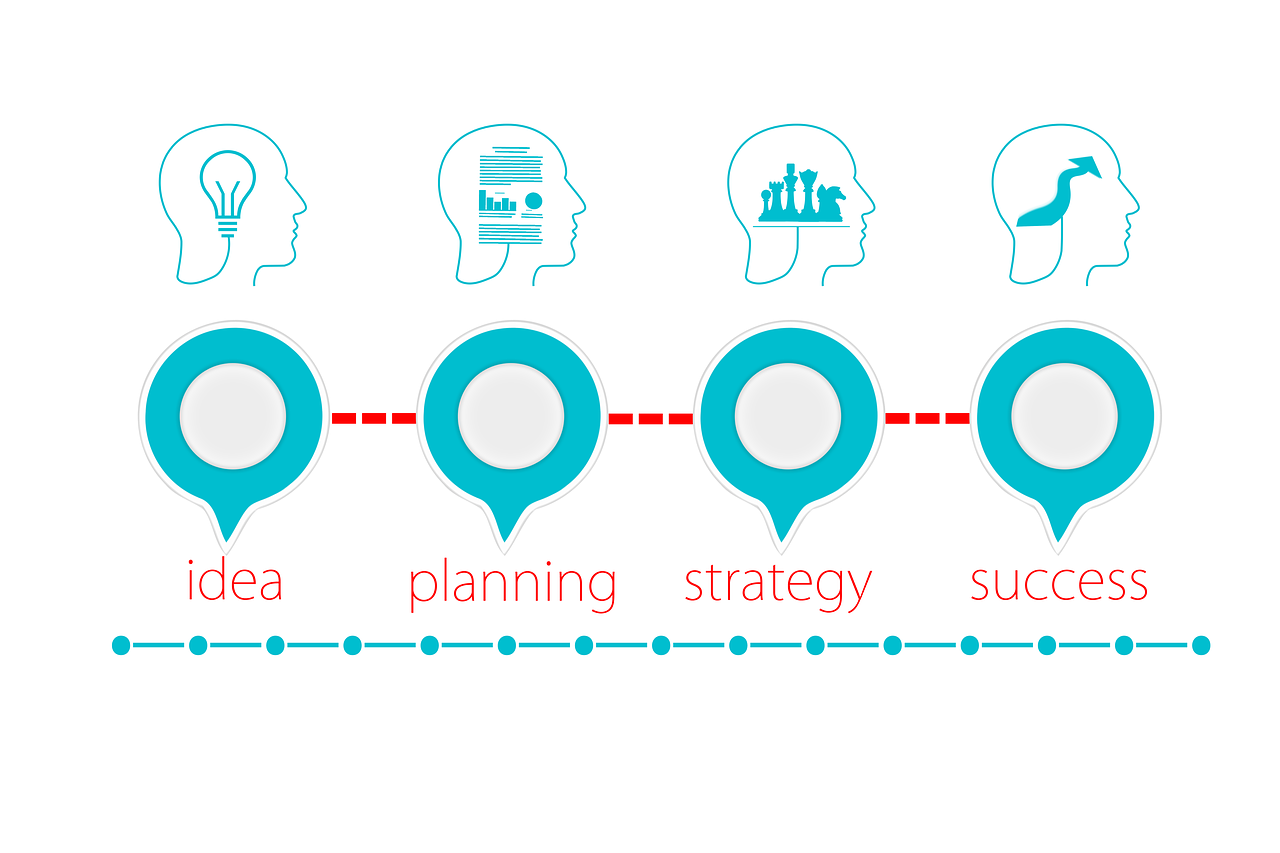Launching an ecommerce business is exciting, but it’s also a process that calls for careful planning and organization. If you’re starting out on your own, you’ll be managing everything from product selection and website design to marketing and customer service. To ensure your business begins on steady footing, here are some self-organization tips for a thriving online store.
Define your goals
Before diving into the nitty-gritty, take time to establish a clear vision for your ecommerce business. What are your objectives? Try setting SMART goals (specific, measurable, achievable, relevant, time-bound). These might include:
- Launch my online store within 60 days
- Achieve 100 sales in three months after launch
- Gain 1,000 Instagram followers in six months
The Indeed Career Guide says, “Setting goals is important because it gives you the focus and direction to be successful.”

Your goals should be meaningful to you and things that you will feel proud to have achieved. Consider rewarding yourself after you hit a target, which can motivate you to keep on working.
Create a detailed business plan

A business plan acts as your blueprint, outlining the steps needed to reach your goals. Conduct market research to find your target audience, understand their needs, and study your competitors. Decide what you’ll sell and ensure there’s demand. High-quality visuals are essential, so investing in stunning product visuals for ecommerce can significantly enhance your brand’s appeal and help convert visitors into buyers. Estimate your startup costs, set a budget, and track expenses. Plan how you’ll attract and keep customers with social media, SEO, email marketing, and ads.
Your business plan doesn’t have to be elaborate, but it should cover the key aspects to keep you organized as you progress. It should include an executive summary, where you describe your business and its purpose, your mission, a summary of your key goals, and details on your products and services. You should also describe your business structure and the people behind it, which can give stakeholders confidence in your leadership and operational setup. Outline the key roles and responsibilities and include an organizational chart. Provide brief bios on founders and key personnel, highlighting their expertise. Mention any external advisors who add credibility.

Outline how you’ll attract and retain customers. Specify your marketing channels (digital marketing, social media, email campaigns, SEO, any offline methods like events and partnerships), and explain how you’ll position the brand to appeal to your target market.
Streamline your workflow
Unless you have a vast team behind you, running a business requires multitasking, but the right tools can simplify your workload.
Setting up your store will be easier with an ecommerce platform like Shopify, which offers user-friendly interfaces and customizable themes. The best Shopify themes can increase customer engagement and boost your sales.
Product management software like Trello and Notion can help you track tasks, set deadlines, and monitor progress. PCMag rated Trello 4 stars out of 5, calling it “one of the most intuitive work management apps you’ll find”. Trello is widely appreciated for its simplicity and ease of use. It uses a visual interface with boards, lists, and cards. The intuitive drag-and-drop interface helps staff visualize tasks and monitor project timelines more easily.
Tools like TradeGecko and Stock Sync can help manage inventory, and tools like QuickBooks and Xero can simplify invoicing, expense tracking, and tax preparation. The QR Code generator can also simplify operations by letting you link physical products or packaging to digital instructions, tutorials, or inventory details.
Setting a schedule

Time management is important when starting a business, especially if you’re balancing other work and/or family commitments. A clear schedule not only keeps you organized but helps you prioritize what matters most. It reduces decision fatigue, as you don’t have to constantly decide what to work on next. Your schedule acts as a roadmap, guiding you through tasks with minimal stress. Sticking to a routine builds momentum and consistency, which are key to progress in business.
Assess your available time. How much time can you realistically dedicate to your ecommerce business each week? You might have another job, so your available hours might be early mornings, evenings, and/or weekends. Map out these blocks of time on a calendar so you can get a clearer sense of what your week will look like.
Establish a daily or weekly schedule that dedicates specific time blocks to tasks like product sourcing, marketing, and customer service. For example, you might plan marketing campaigns on Monday and update your website on Tuesday. By breaking tasks into manageable chunks, you’ll make steady progress without feeling overwhelmed. You might group similar activities into a single time block to maintain focus and efficiency.
Here’s an example of a schedule:
- Monday morning: Plan and schedule marketing campaigns.
- Evening: Research industry trends.
- Tuesday morning: Update product listings with fresh images and optimized descriptions.
- Evening: Respond to customer inquiries.
- Wednesday morning: Check stock levels and place orders with suppliers if necessary.
- Evening: Record a product demo for social media.
- Thursday morning: Research and build partnerships with influencers.
- Evening: Brainstorm ideas for customer loyalty programs.
- Friday morning: Analyze key metrics from the week, including website traffic, sales performance, and ad ROI.
- Evening: Read a business book or listen to a podcast.
- Saturday afternoon: Host a live Q&A session on Instagram.
- Saturday evening: Plan next week’s tasks and goals.
- Sunday: Review your overall progress.
- Sunday afternoon: Take a break from work and focus on self-care and spending quality time with friends and family.
Prioritize and delegate
As an ecommerce entrepreneur, it might be tempting to handle everything yourself. But this approach may lead to burnout and inefficiency. If you have the finances, consider outsourcing the tasks that you’re happy for others to complete. For example, you might focus on product selection yourself, but delegate graphic design or content writing.
To begin with, identify which tasks are the most important and time-sensitive. Not all activities will carry the same weight. Focus on the high-priority tasks. For example, if you’re trying to grow your customer base, you should focus on marketing strategies, product development, and customer service.
Outsourcing not only saves time but allows you to concentrate on what you do best and ensure other tasks are handled professionally. Nona Djavid, writing for Forbes, advises, “it is critical to remember your role in your business. The most valuable contributions you can make are high-income-producing and legacy-building tasks”. Delegation is “an invaluable tool”, allowing you more time to focus on these important tasks.
Areas like graphic design, product photography, social media management, and content writing are delegated by many entrepreneurs. These areas may not be your strength, and hiring a professional can elevate the quality of your business’s output. Another example is hiring a virtual assistant to handle customer service inquiries or manage email marketing campaigns. This allows you to focus on other areas, such as developing new product offerings.
Outsourcing and delegating may come with their own set of challenges. A common fear of entrepreneurs is letting go of control. However, if you clearly communicate your expectations and provide detailed instructions, and regularly check in, you can be confident outsourced staff will move in the right direction and build trust with them. Vet any candidates thoroughly and look for individuals who have experience in the specific area you need help with.
Macro Risk & External Factors to Consider
As you build your e-commerce business, it’s important to remember that success isn’t driven solely by internal planning. Broader economic, policy, and market forces can influence customer spending, supply chain reliability, and operating costs. Treating these external factors as part of your overall strategy can help you stay resilient and make better long-term decisions.
One major external factor is the general economic climate. Shifts in interest rates, inflation, and consumer confidence can directly affect online purchasing behavior. When inflation rises, discretionary spending often dips, meaning customers may delay purchases or seek lower-priced alternatives. Conversely, periods of economic stability often boost online sales as consumers feel more comfortable spending on non-essentials. Regularly monitoring these trends can help you adjust pricing, promotions, and inventory levels.
Government policy is another area worth paying attention to. For example, recent provisions under the OBBBA (Trump’s One Big Beautiful Bill Act) include several tax changes that may indirectly affect e-commerce businesses. Some provisions increase take-home pay for certain groups, while others tighten spending in social programs—creating a mix of potential upsides and downsides depending on your target market. OBBBA doesn’t need to dominate your planning, but treating it as one element of your broader policy awareness helps ensure you’re prepared for shifts in consumer behavior or regulatory requirements.
Global supply chain reliability is also a key macro risk for online sellers. Shipping delays, port congestion, and increased freight costs—whether caused by geopolitical tensions, labor shortages, or natural disasters—can affect inventory availability and delivery timelines. Building relationships with multiple suppliers, maintaining reasonable stock levels, and communicating clearly with customers can soften the impact of unexpected disruptions.
Finally, technology trends and platform regulations can introduce macro-level changes that impact how you operate. Updates to major e-commerce platforms, shifts in social media algorithms, new privacy laws, or changes in digital advertising rules may alter how you reach customers or track performance. Staying flexible and keeping an eye on industry updates can help you pivot quickly when needed.
By incorporating these macro risks—economic shifts, policy changes like the OBBBA, supply chain dynamics, and tech-platform evolution—into your business planning, you’ll be better positioned to navigate uncertainty and build an e-commerce operation that’s both adaptable and sustainable.
Final word
There are many aspects to launching and running an ecommerce business, but with some careful planning and scheduling, it can be more manageable and enjoyable. Make sure to set yourself up for success with a considered business plan, before deciding on a schedule to maximize your available time, and using the tools available to streamline your workflow.


